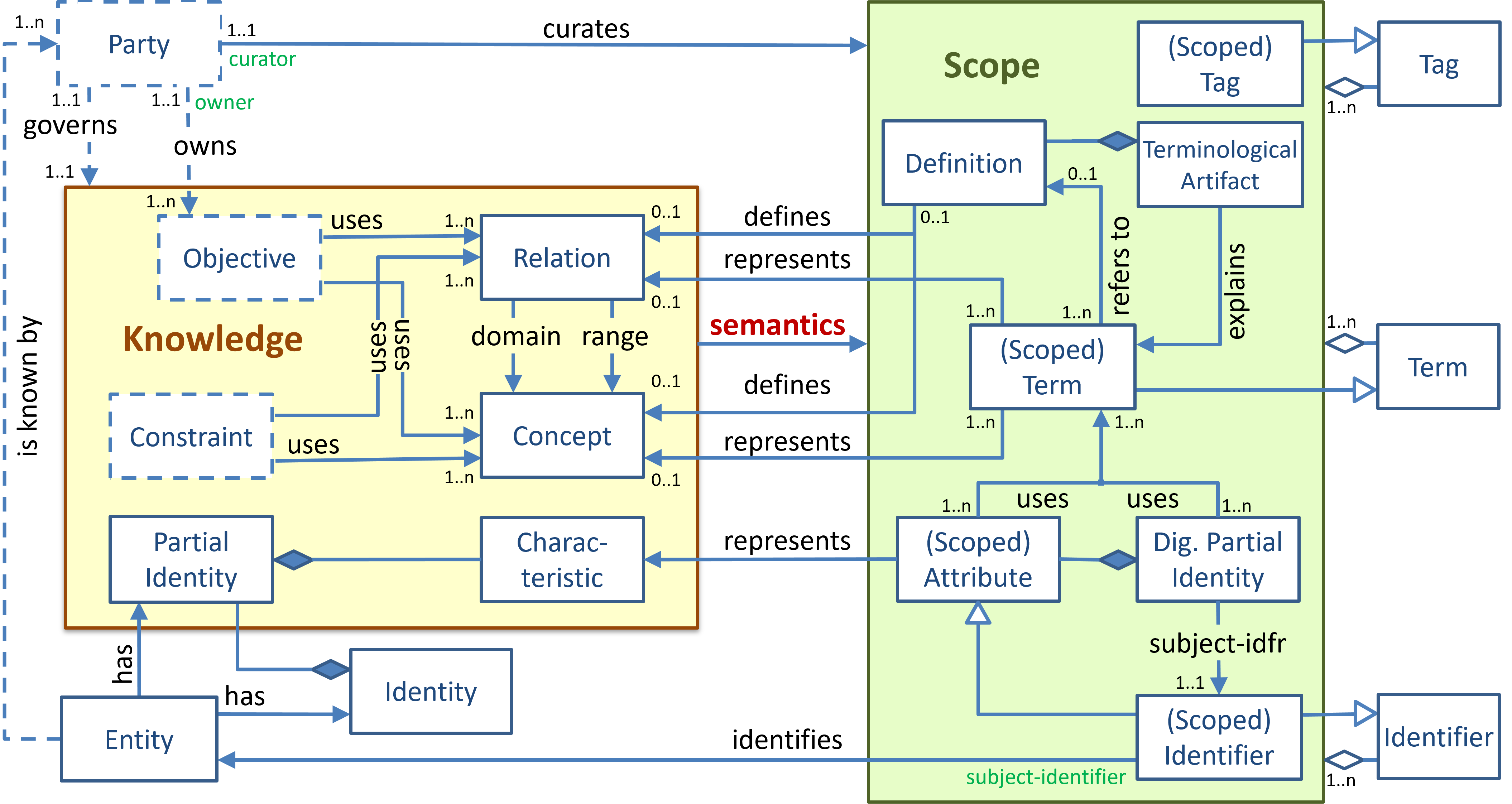Semantics Pattern
This is work that is still an idea. If you want to help, do so by telling us in a new issue.
Purpose
The Semantics Pattern describes the relations between the (intangible) Concepts that are part of a party's knowledge, and how they are (tangibly) represented by terms, attributes, etc. The ability to create and maintain such a mapping (which is known as a semantics) is critical for forstering a common understanding between parties that work together to realize specific objectives. The quality of the mapping depends on the extent to which the definitions that are being used have the property of demonstrably leading to parties making the same distinctions, i.e. having a sufficiently similar understanding of such terms.
Introduction
Storyline that needs to be worked out:
- it is impossible to really understand one another because Knowledge is intangible.
- next best is to create tangible, so called (terminological) artifacts that a party can be create/obtain, store, process, disseminate, for the purpose of enabling other parties to 'understand' (parts of) what it knows.
- definitions are the prime examples of such artifacts; ideally, they are phrased as criteria so that different parties can all assess these criteria in different use-cases (relevant for the objectives they all seek to realize), and subsequently agree on whether or not they have all interpreted some criteria in some use-case in the same manner, and if they do, conclude that they have the same understanding about the disctincion that the criteria makes (at least to the extent to where the use-cases go).
- other artifacts may also help in understanding each other's knowledge. Such artifacts include more casual explanations, a formal or informal description of how the various concepts that are being explained (or defined) relate to one another, etc. Thus, we expect to see semantic units of different kinds to be created, maintained, evaluated and continually improved on.
- establishing a set of such definitions, associated terms (a 'common terminology') enables the parties to express characteristics of entities as (scoped!) attributes, and hence a partial identity of an entity in a (digital) representation.
The pattern also hints at the relation between semantics and
Formalized model
Here is a visual representation of this pattern, using the following notations and conventions:
